The research of the Metals Systems Group
Hans Flandorfer and Klaus Richter jointly lead the Metals Systems Group. We synthesize mainly metallic materials for a broad variety of potential applications, from classical high-temperature and structural alloys to functional materials for electrochemical, magnetic or catalytic applications.
Our group is focused on the fundamental knowledge needed for the development of the material and its function. We consequently concentrate on the following aspects:
- Optimized material synthesis
- Determination of crystal structure and microstructure
- Investigation of thermochemical and physicochemical properties
- Determination of phase transitions and phase diagrams
- Description of structure-property relations in materials

Liquidus projection with liquidus isotherms in the ternary system Cu-Li-Sn
Our group is mainly working experimentally but also uses theoretical tools like thermodynamic modelling and quantum-chemical calculations.
Methods
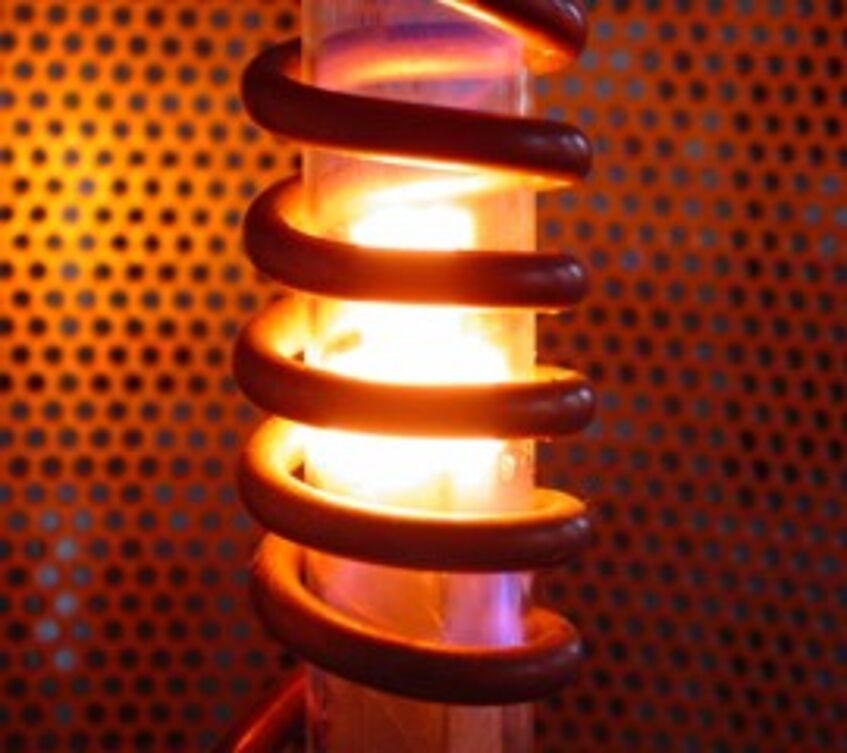
Direct induction heating of small samples sealed into Ta crucibles allows fast heating to temperatures up to 1800°C.
Methods
Working with intermetallic or oxidic compounds requires special techniques for synthesis at sometimes very high temperatures or at controlled atmosphere conditions. Special synthesis methods like chemical vapor transport or the newly developed vapor-solid synthesis for intermetallic compounds (also used in nanoparticle synthesis) may also be useful. Our laboratories are well equipped with this kind of specialized devices like arc- and induction-furnaces, quartz-glass and tantalum sealing equipment, gradient furnaces, glove box and a high-quality vacuum line. Working with specially designed quartz-glass instruments belongs to our standard methods.
Materials characterization methods include thermal analyses (DTA/DSC/TGA) as well as optical- and electron-microscopy. X-ray diffraction includes single-crystal- (SXRD) and powder-methods (PXRD). The latter is also available as high-temperature method. Corresponding instruments are available in our group, and a host of additional useful characterization methods are available in the core facilities of the faculty of chemistry and on cooperation with other departments.
Experimental methods for thermochemical characterization are a second focus of our group. We use high-temperature calorimetry as well as vapor pressure methods (isopiestic equilibration).
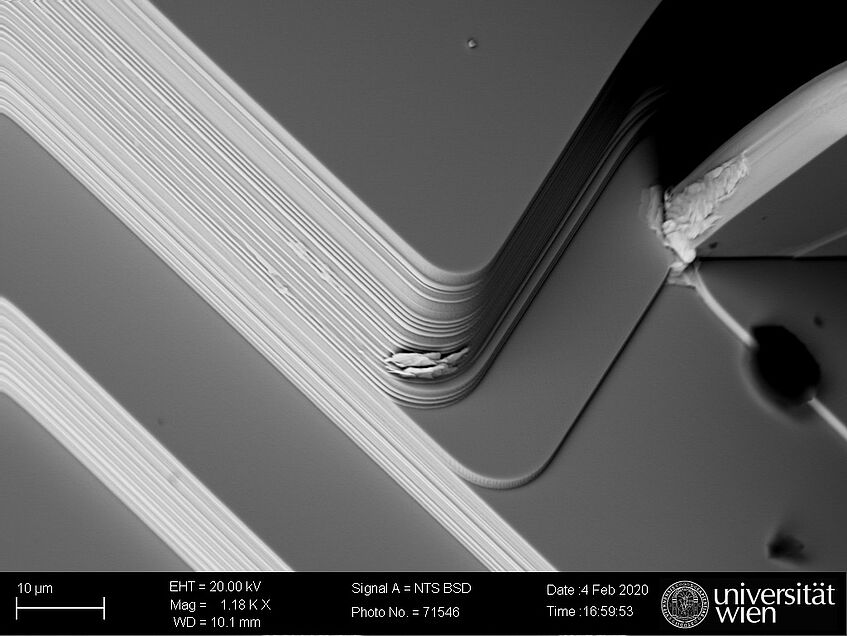
Sekundärelektronenbild einer misfit-layer Verbindung im System Se-Sn-V die in einem kürzlich abgeschlossenen Projekt synthetisiert wurde.
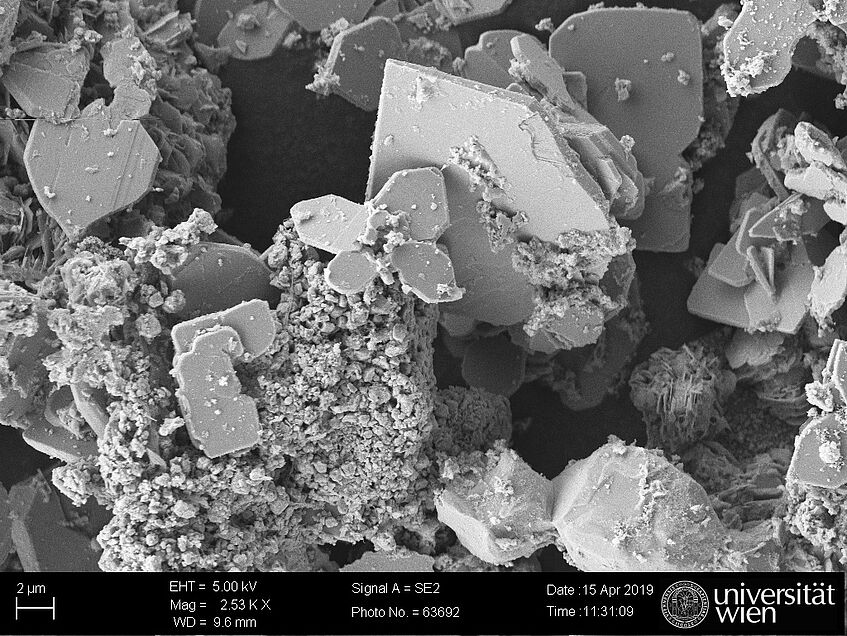
Kristalle von SnS2 hexagonaler Morphologie mit breiter Größenverteilung aus der Hydrothermalsynthese.
Topics
- Structural and thermodynamic properties of intermetallic anode materials for Li-Ion Batteries (Flandorfer)
- Synthesis and characterization of magnetic topological insulators and other layered compounds (Richter)
- The Vapor-Solid synthesis as tool for diffusion and phase diagram studies in intermetallic systems (Richter)
- Supported intermetallic nanoparticles for catalytic applications (Richter)
- Structured tin-sulfides or silicon/tin-sulfide composites as anode materials (Flandorfer)
- Thermodynamic and structural investigations of LNMO (LiNixMn2-xO4) spinel compounds (Flandorfer)
Publications Flandorfer (https://orcid.org/0000-0002-9692-2119)
Publications Richter (https://orcid.org/0000-0001-7128-6956)
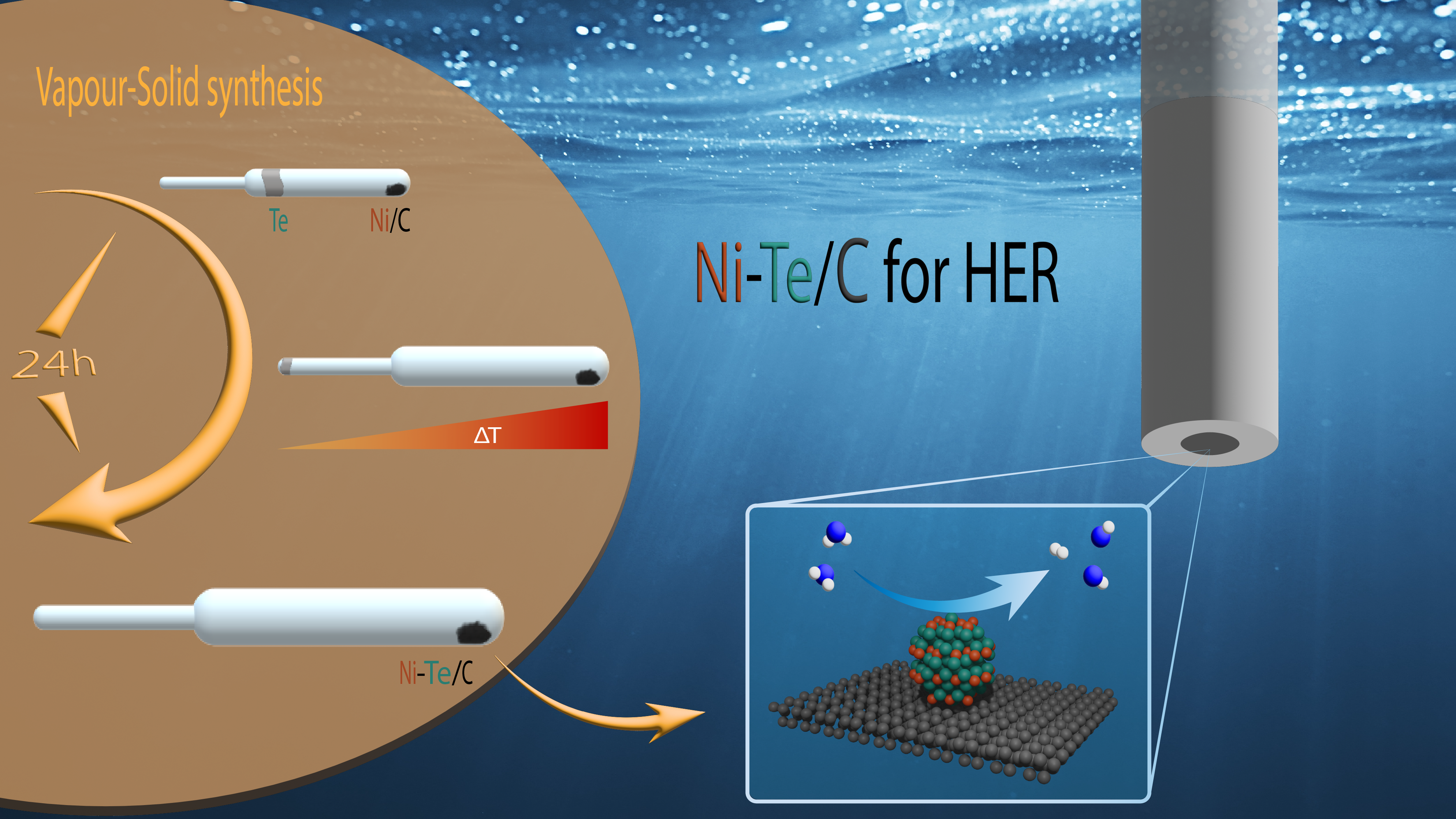
Vapor-solid synthesis of Ni-Te nanoparticles supported on carbon black to be used in hydrogen evolution reaction.
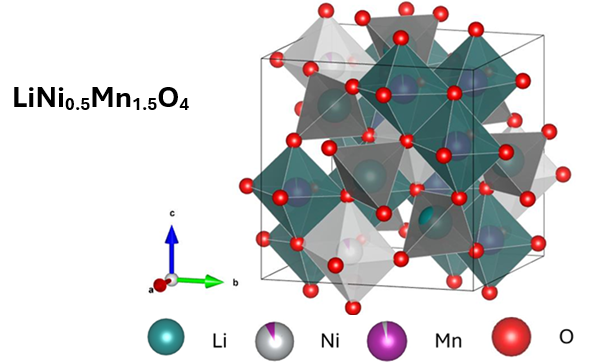
Crystal Structure of the ordered variant of LNMO.
